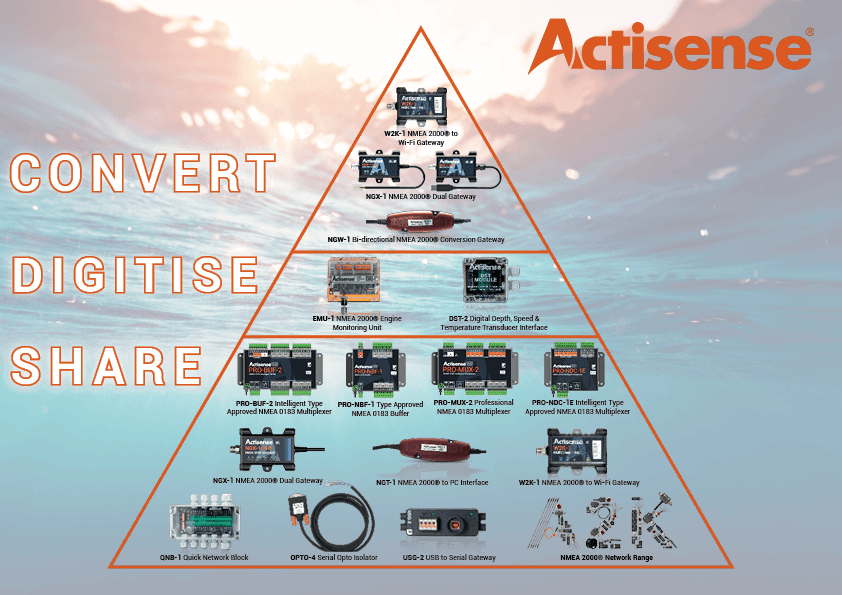- This topic has 2 replies, 3 voices, and was last updated 2 years, 6 months ago by
gildnerw.
-
AuthorPosts
-
September 16, 2021 at 8:21 am #9615
Justin Cohen
ModeratorEMU-1 Engine compatibility
September 16, 2021 at 8:27 am #9617Josh Keets
KeymasterThe most important point to remember about the EMU-1 is that it is the senders and gauges that are important when trying to understand compatibility and not the engine model / manufacturer. This is a helpful article that describes this in more detail:
https://www.actisense.com/knowledge-base/nmea-2000/emu-1-nmea-2000-engine-monitoring-unit/emu-1-engine-compatibility-and-setup/The EMU-1 will output standard NMEA 2000 engine, transmission and fluid level PGNs that will be understood by any NMEA 2000 MFD.
Points to check are that both engines share a common ground and that each engine doesn’t require more than 3 gauges and 2 alarms to be monitored. One of the other benefits of using one EMU-1 per engine is that the battery voltage of each engine can be transmitted on the NMEA 2000 network.
Please note that an NGT-1-USB will be required to configure an EMU-1. For many customers, leaving that NGT-1-USB on the NMEA 2000 network after EMU-1 installation is beneficial as it can be very useful for diagnosing NMEA 2000 data issues (when used with our NMEA Reader software application) and it can be used to update the EMU-1 firmware and tweak the configuration if required.
September 30, 2021 at 2:02 pm #9756gildnerw
ParticipantRegarding voltage. My 2006 DeFever 49 CPMY is equipped with two John Deere diesels with analog monitoring. The four OEM gauges that monitor each engine include: Tachometer, Engine Oil Pressure, Engine Coolant Temperature and Alternator voltage. The boat’s DC power set up is that the engine starter batteries are also the house batteries for the DC system and they are crossed over. Because of this set up, I would like to know the alternator voltage for each engine, and am not as interested in the DC voltage of the NMEA network to which the EMU-1 is attached. (I also have other indicators for overall DC voltage, not just from the EMU-1.) In addition, among other things, a zero voltage indication on an engine would indicate a possible belt or alternator failure.
When I wired the EMU-1 to the system, I did not think to check as to whether alternator voltage is an available gauge choice. Only when I programmed the EMU-1 did I realize that is not the case.
Therefore, I would ask that you consider adding a VDO 8 – 16 volt gauge choice to the options.
Thank you very much.
December 16, 2021 at 5:02 am #10290Anonymous
Inactive(Awaiting moderation)
-
AuthorPosts
- You must be logged in to reply to this topic.




